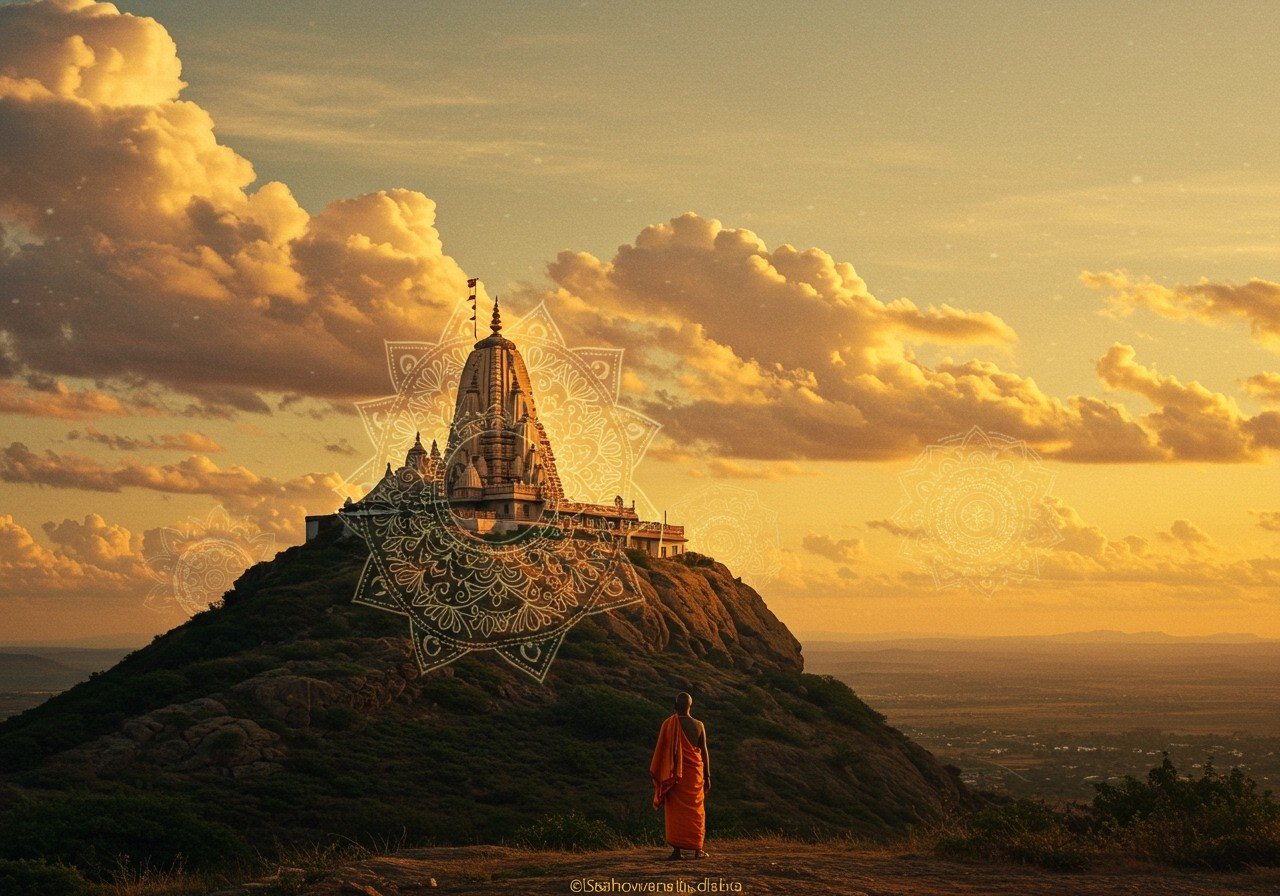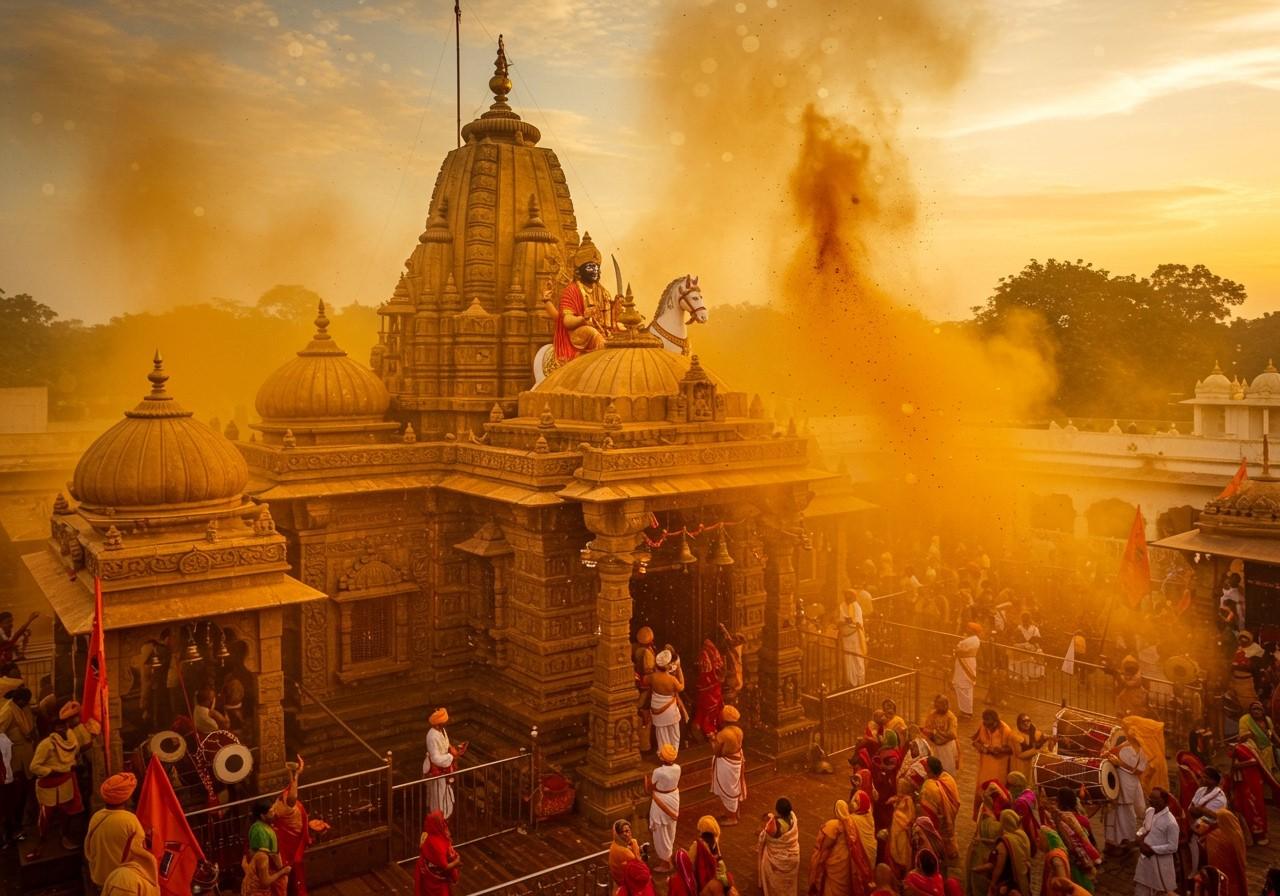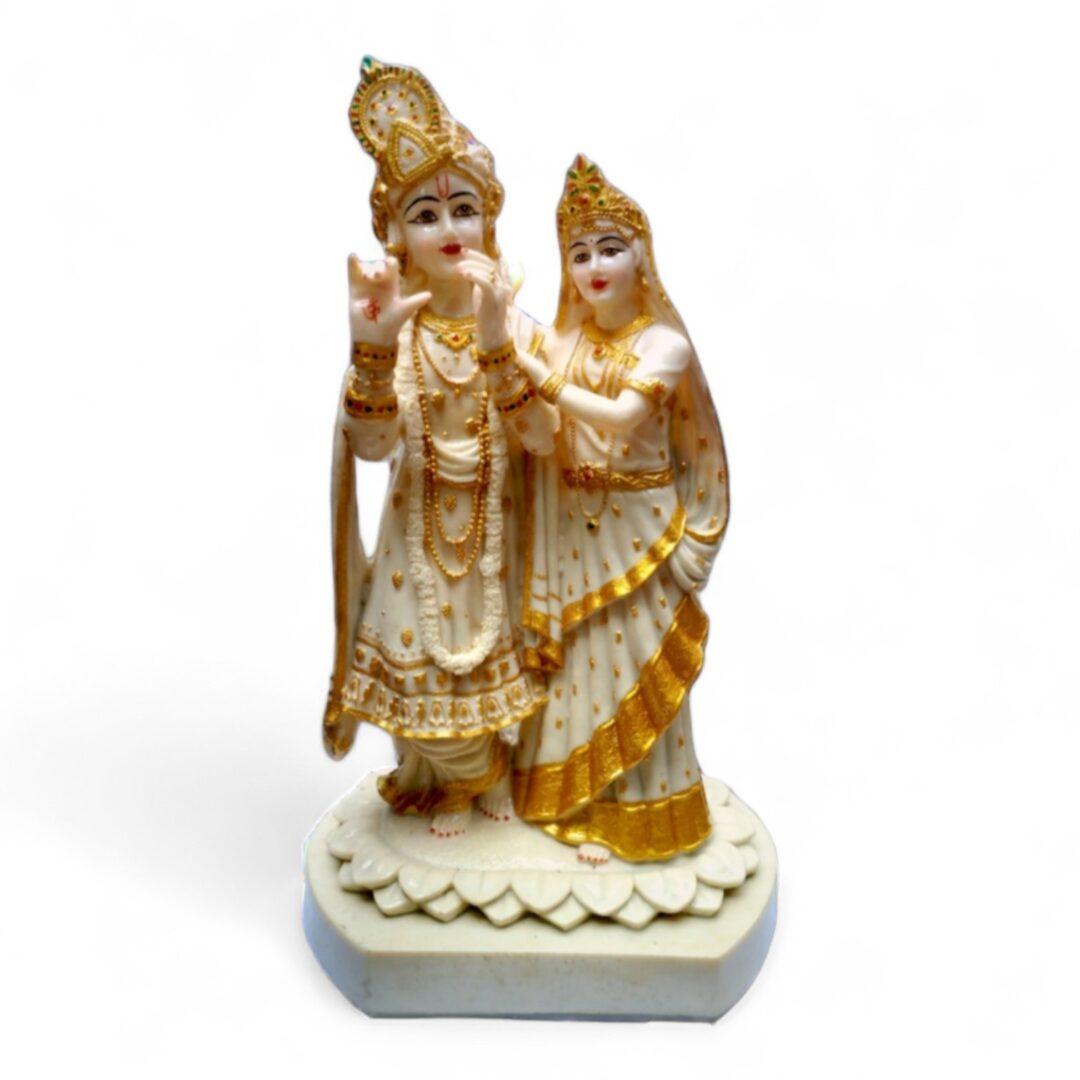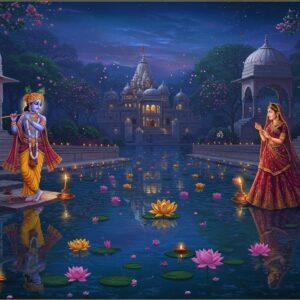
For many of us in India, the idea of a pilgrimage, a teerth yatra, is deeply embedded in our hearts. It’s a journey not just of distance, but of faith. But what happens when you look at such a sacred place with the eyes of a modern, questioning soul? Arun Kolatkar’s celebrated collection of poems, “Jejuri,” does exactly that. It takes us on a walk through the famous pilgrimage town in Maharashtra, dedicated to Lord Khandoba, but shows us a side of faith that is real, raw, and wonderfully human.

The Real and the Revered: A Walk Through Kolatkar’s Jejuri
Kolatkar doesn’t present Jejuri as a place of grand miracles. Instead, he finds the magic in the ordinary, the divine in the dust. His poetry is a beautiful dance between deep respect and a touch of playful skepticism, a feeling many of us can relate to. He shows us that faith isn’t always about grand pronouncements; sometimes, it’s found in the quiet, overlooked corners of a holy place.
Where the Sacred and the Everyday Mingle
One of the most powerful things about “Jejuri” is how it shows the sacred and the profane living side-by-side, just like in real life. A moment of profound prayer might be interrupted by a priest more concerned with dakshina, or a divine legend might be told by a guide who is simply doing his job. Kolatkar masterfully captures this blend, reminding us that spirituality in India isn’t separate from daily life—it’s woven right into it. This is the very essence of places like the Khandoba Temple in Jejuri, where history, faith, and humanity come together.
Symbols That Speak Volumes
Kolatkar uses simple, powerful images to tell a deeper story. These are not just descriptions; they are witnesses to time and faith.
- The Unforgiving Sun and Crumbling Stones: The harsh Maharashtrian sun beats down on everything, from the ancient, crumbling pillars to the dusty idols of the gods. These recurring images serve as a constant reminder of time’s passage and the beautiful impermanence of everything, even the homes of deities. They reflect the eternal search for meaning in a world where nothing lasts forever.
- The Smallest Details Hold Magic: Kolatkar’s genius lies in finding wonder in the smallest things. An ordinary crow pecking at temple offerings, a dog napping peacefully in a sacred space, or a tiny butterfly that is described as “a magic” in itself. These images disrupt our traditional ideas of sanctity and show that the divine can be found anywhere, not just in the main sanctum.
A Modern Pilgrim’s Perspective
Kolatkar’s “Jejuri” is not your typical devotional text. It’s a journey seen through the eyes of someone who questions, observes, and finds beauty not in blind faith, but in the complex reality of it. He sees the dust on the idols, the emptiness of a temple tank, and treats them not as signs of neglect, but as part of a deeper, more honest spiritual experience. This unique viewpoint is what makes the poem so relatable to the modern Indian mind.
For those planning their own spiritual journey, perhaps inspired by Kolatkar’s words, our practical planning guide for a Khandoba temple trip can be an invaluable resource, helping you bridge the gap between poetry and pilgrimage.

Connect with Your Faith, Your Way
Reading “Jejuri” might stir a desire to connect with these traditions more deeply in your own life. While the poem explores the external world of a temple town, the essence of devotion often starts in our own homes, in our personal puja space. At poojn.in, we understand this intimate connection. We believe that every ritual, big or small, is a way to find peace and meaning.
Whether you wish to establish a sacred corner with a serene Marble Dust Shiva Lingam or feel the meditative calm of an Adiyogi Murti, we provide authentic, high-quality items to support your spiritual journey. Our collection is curated with reverence, ensuring that you receive not just a product, but a vessel for your devotion.
Your Questions on “Jejuri” Answered
Many readers are left with lingering thoughts after experiencing Kolatkar’s work. Let’s explore some of them.
At its heart, “Jejuri” is a profound exploration of faith and doubt. The poem doesn’t give simple answers but instead looks at the complex relationship we have with tradition, belief, and our cultural identity. It dives deep into the spiritual air of the Jejuri temple and the rituals that have been performed there for centuries.
The poem is a masterclass in using vivid, sensory imagery to bring Jejuri to life. You can almost feel the heat of the sun and hear the temple bells. Kolatkar paints a picture of the devotees, the landscape, and the ancient rituals, creating an experience that feels both mystical and incredibly real.
Jejuri itself holds immense cultural significance as a major pilgrimage site. The poem beautifully captures the deep-rooted beliefs and rich traditions associated with the Khandoba temple, making it a literary treasure that preserves a piece of our cultural heritage. It’s a journey that many undertake, much like the revered Ashtavinayak Yatra in Maharashtra, which holds a special place in the hearts of devotees.
In terms of poetic style, Kolatkar uses simple, everyday language and free verse, making his profound thoughts accessible to everyone. He uses literary devices like metaphors and personification not to complicate, but to deepen the emotional and spiritual impact of the imagery, making us see the world of Jejuri in a new light.
Ultimately, Kolatkar’s “Jejuri” serves as a mirror to Indian tradition. It reflects the customs and beliefs that are the bedrock of our culture, offering a window into the spiritual fabric of our land. It shows that faith is not a monument, but a living, breathing experience, full of complexity, beauty, and quiet wonder.

